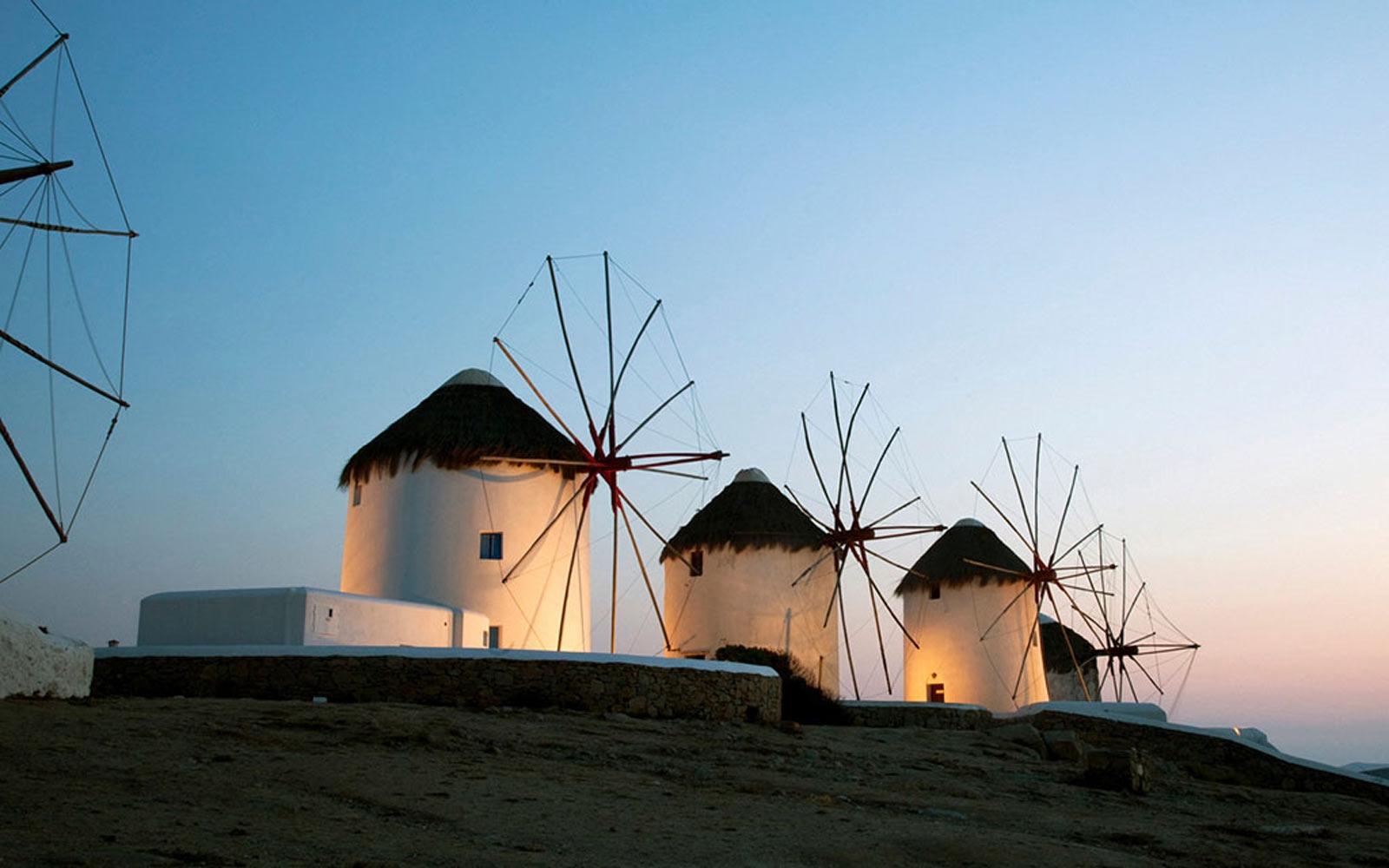The Mills of Patmos
The windmills of Chora Built to the east of the Holy Monastery of Patmos, on top of a hill overlooking the sea, the three windmills of Chora gave their name to the neighboring district of Mylon and since their restoration in 2010, they are an additional jewel of the island, which awarded by Europa Nostra.
The windmills (two of which date back to 1588, and the third built in 1863) fell into disuse at the end of the 1950s, when industrial flour mills replaced traditional production, as across Europe the mills fell into disrepair.
The ruined shells, visible from the sea, moved the Swiss sailor and banker, Mr. Charles Pictet, an ardent friend of Patmos, who envisioned them with sails filled by the Aeolians like an earthly sailing ship, but also contributing both to the landscape and in the local community, as they had done for four continuous centuries.
With his initiative and funding, as well as with contributions from private individuals and the Stavros Niarchos Foundation, the project of their restoration was entrusted to the Diaspora Greek architect Daphne Becket and was carried out with the collaboration of people from different horizons, but with the same love and respect for tradition: from the local shipwright to the eighth-generation French miller, and from the Swiss sailing sail specialist to the Greek and French engineers responsible for reworking their mechanisms. The purpose of all was not only the restoration of the building shell with traditional materials, i.e. their appearance, but also their utilitarian value, their "soul", so that they are dynamic and living organisms, friendly to the environment.
Today, the first mill is re-opening as a flour mill, with the ultimate aim not only to offer its visitors the image of traditional flour production technology, but also to contribute to the revival of the traditional professions of flour and baker and the production of truly ancient products.
The second windmill, thanks to the replacement of the millstone by a generator and the installation of a metal running beam for the impeller with a mechanical brake, is able to generate electricity from wind energy. Finally, the plan for the third windmill is water production.
The windmills of Chora are rightly one of its attractions, but above all they are a living monument, a bridge that connects the past with the present and the future.




